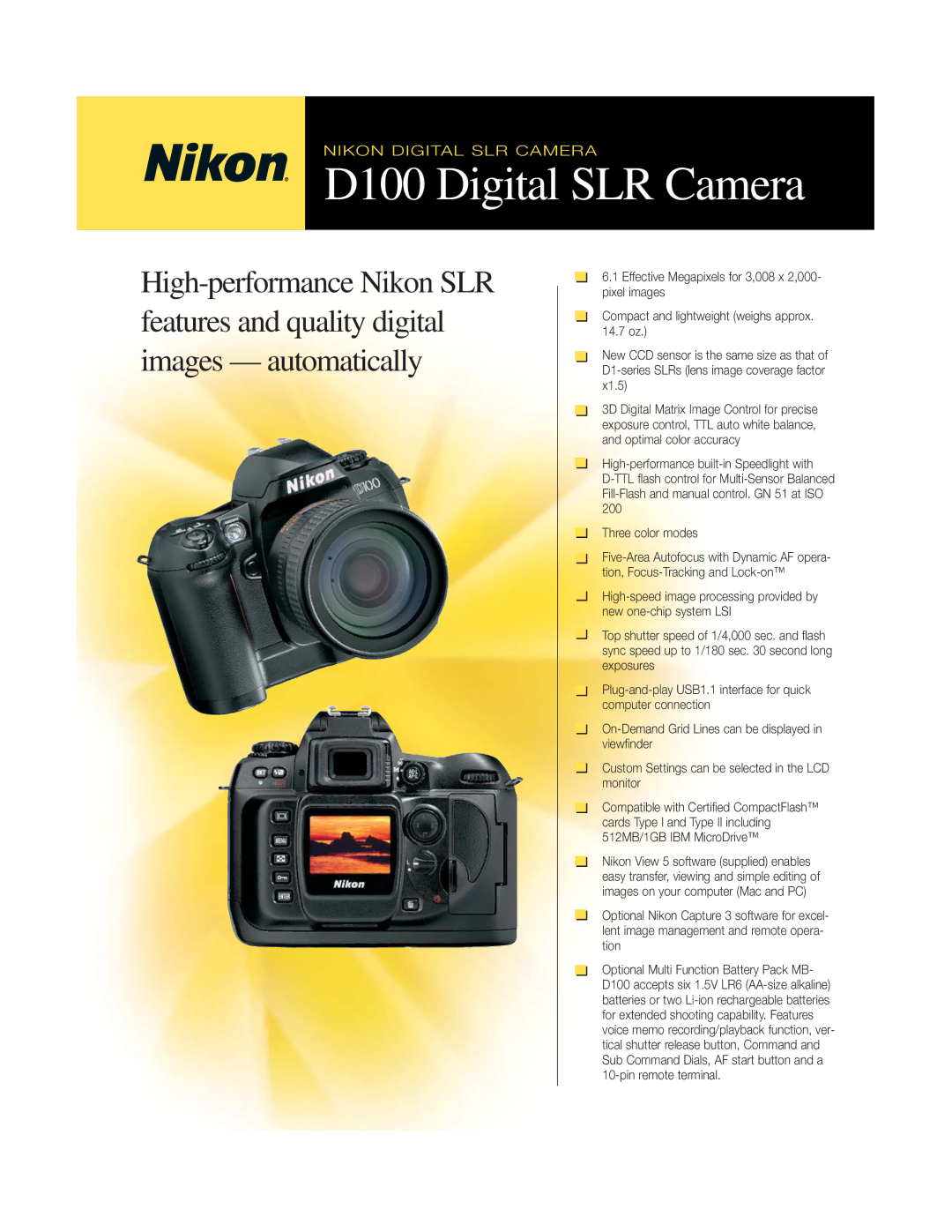D100 specifications
The Nikon D100, launched in 2002, marked a significant evolution in digital photography, particularly in the area of DSLR cameras. Designed for both enthusiasts and professionals, this camera delivered remarkable features that set a new standard in the digital imaging industry.At the core of the Nikon D100 is a 6.1-megapixel CMOS sensor that offers exceptional image quality with rich detail and dynamic range. This sensor produces images with a resolution of 3008 x 2000 pixels, enabling users to create large prints without sacrificing clarity. The D100 is also equipped with the Nikon Capture software, which provides comprehensive tools for RAW image processing, allowing photographers to edit their images with precision.
One of the standout features of the D100 is its ISO sensitivity range, from 200 to 1600, which provides versatility in different lighting conditions. This range allows users to take stunning photographs in low-light scenarios without the need for a flash. The camera also includes a built-in flash and supports external flash units, giving photographers further control over illumination.
The D100 boasts an advanced 5-area autofocus system that ensures sharp focus on subjects, even in challenging conditions. Additionally, its 2.0-inch LCD screen offers an intuitive interface for navigating menus and reviewing images. The camera's viewfinder, with 95% frame coverage and a grid display, allows photographers to compose their shots with precision.
For creative flexibility, the D100 includes several exposure modes, including Program, Shutter Priority, Aperture Priority, and Manual mode. These options enable photographers to take full control of their shooting experience. The camera also supports multiple metering modes, including Matrix, Center-Weighted, and Spot metering, allowing for precise exposure adjustments in varied lighting situations.
The build quality of the D100 is another noteworthy aspect. With a robust magnesium alloy body, it is designed to withstand the rigors of professional use while remaining relatively lightweight. The camera also features weather sealing, making it suitable for outdoor photography in various conditions.
In terms of connectivity, the Nikon D100 includes USB 1.1 for easy file transfers to computers, ensuring that photographers can quickly share their images. Overall, the Nikon D100 played a significant role in popularizing digital SLR technology, setting a precedent for future models with its impressive features and capabilities. Its performance and durability continue to be appreciated by many photographers, proving its legacy in the digital camera landscape.

